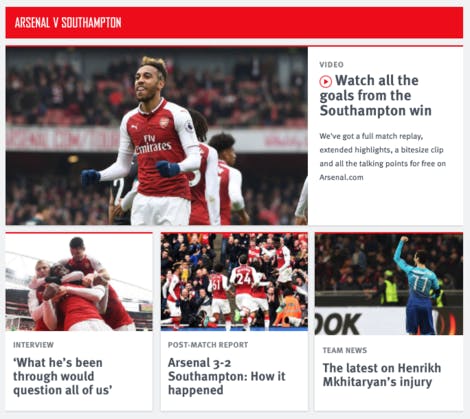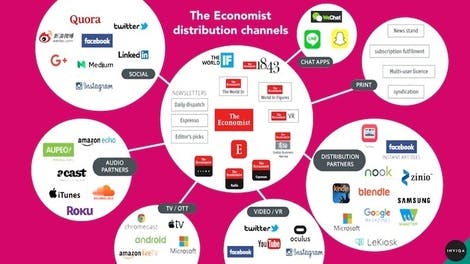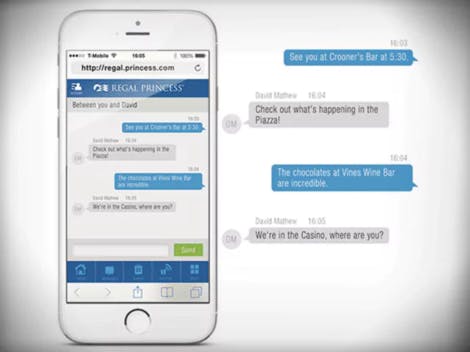Here we look at how organisations are using a decoupled content management system (CMS) to free-up their content to do just that.
Why brands and publishers are decoupling their systems
Organisations need to get content to audiences where they’re looking for it, but legacy systems can make it tricky to seamlessly deliver content in real-time, in the right context, to the exploding number of channels and touchpoints.
Brands and publishers need to free their content from siloed systems and we are seeing a move towards open, decoupled, API-driven CMSes that allow them more flexibility and to share content quickly at scale.
Decoupled CMSes allow content teams to write once, publish anywhere by storing content as structured data components that can be consumed by any device and presented in the right format for their destination using common APIs and repositories.
So what are the applications of this? Let’s take a look at six brands that are transforming customer experiences by decoupling their content systems.
KitchenAid

Leading kitchen appliance manufacturer KitchenAid can deliver recipes to your food processor to match the ingredients you have to hand. It does this by using a decoupled CMS to manage and deliver recipe content to its app, which integrates with the KitchenAid Cook Processor.
This is a great example of how API-led, decoupled systems allow organisations to repurpose content for delivery to Internet of Things (IoT) devices.
Arsenal F.C.
Arsenal Football Club (disclaimer: a client of mine at Inviqa) is demonstrating that it understands the fundamental need to play where your audience is. It recently remodelled its content, launching a new, decoupled content hub to expose the club’s rich library of content over multiple channels in the fastest and most efficient way.
This new content hub integrates with external APIs and third-party systems to help the Premier League club seamlessly reach more channels, better connect with fans, and enhance the fan experience.
As Arsenal’s core platform product manager noted, the club needed a content management system (CMS) ‘that would, in time, be delivering content to devices, platforms, and channels that don’t currently exist’. With support for both new and traditional modes of content delivery, the CMS behind its new content hub is based on Drupal 8.

The Economist
The Economist is one of my favourite examples of a media brand that’s really pushing the boundaries of content delivery.
The Economist has reengineered its core systems to support microservices and APIs. As a result, it’s able to serve real-time content to a wide array of channels using the same core content.
It’s an approach that gives the media organisation the agility and freedom to move quickly and test where its content resonates best.

Princess Cruises
Princess Cruises wanted to transform the way its guests access content while onboard its vessels. That’s why the company decided to evolve its popular Princess@Sea mobile application into a fully cross-platform, on-board digital experience platform.
Providing each passenger with engaging, multilingual, real-time experiences on the device of their choosing meant that Princess Cruises needed to fully utilise every passenger-facing screen onboard its 17 ships. Getting there would require a means of centrally managing content across all these channels and touchpoints.
Powered by a decoupled CMS, the new Princess@Sea platform allows passengers to use whichever device suits them best to send instant messages, and to browse events schedules, itineraries, deck plans, and personalised planners.
Content is managed from a central website and is then migrated to unique websites onboard the ships at sea. The organisation has seen a 71% penetration, with 32% of passengers registering for Princess@Sea accounts.

Vodafone
Vodafone is one of the world’s largest telecom providers and its sheer size poses challenges when it comes to delivering seamless digital experiences. But with a focus on enabling the multichannel experience of the future, it’s making huge strides here.
Vodafone’s CMS provides the backbone for delivering the latest content and product information to its in-store point-of-sale (POS) systems as part of a wider omni-channel strategy. Its in-store screens are no longer a silo for content delivery, but are part of a continuous customer journey that also spans web and mobile, digital campaigns, and in-store signage. Content is managed from a single, decoupled system and can be translated and localised for local markets.
Check-out this video to learn more about how they’re redefining the connected customer journey.
NPR
US company NPR (national public radio) is decoupling its systems to take advantage of growing consumer appetite for voice search via voice-activated speakers such as Google Home.
Through its NPR One audio app, it’s connecting audiences to a stream of news, podcasts, and other content based on what an individual likes. So, by enabling the app on Google Home, users can enjoy personalised content, hands-free.
Decoupling your systems is getting easier
Thanks to the rise in industry standards like REST, JSON API and Graph QL, it’s easier than ever to integrate systems and make use of shared repositories and APIs to get content where it needs to be, in the right format.
Remember though that technology is just the mechanism of delivery; your content provides the value.
That’s why content modelling needs to be at the centre of everything as you map and understand how you content fits together, and how that content can be broken down into reusable components that serve a breadth of use cases.
Comments